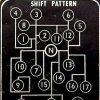From the excellent Systemic Problems: A perspective on stem cell aging and rejuvenation article:
GDF11 abdicates the throne of systemic rejuvenation
As recently revealed, the key findings on diminished levels of GDF11 with age and of the positive effects of this protein on myogenesis are not reproduced [36, 40-42]. Very importantly, this would not come as a shock if one would read the relevant papers. Based on the science, GDF11 is 90% identical to myostatin, which inhibits (not activates) myogenesis. GDF11 in neurogenesis serves to limit the numbers of neural stem cells [43, 44] and this discrepancy was not cited or discussed in the pro-rejuvenation papers. GDF11 signals through the same receptor as TGF-beta1 and myostatin (more efficiently than myostatin [40] and inhibition (not activation) of this ALK5 receptor has been shown to enhance and rejuvenate myogenesis and also, neurogenesis [6, 37]. The bulk of data questions the anti-aging effects of GDF11, and makes the Cell Metabolism paper important for avoiding years of unproductive research in the wrong directions.

Figure 2. Bi-phasic requirements for TGFβ, myostatin, pp38, Wnt during muscle repair.Activated by muscle injury quiescent muscle stem cells enter cell cycle and differentiate into rapidly dividing intermediate progenitor cells that expand, when the levels of listed factors are low. Up-regulation of these factors (likely by many sources, including infiltrating leukocytes that clear the wound) is needed for productive differentiation of the intermediate progenitors into fusion-competent myoblasts and post-mitotic multi-nucleated myotubes. In vitro, intermediate progenitors can be expanded in high mitogen medium and upon withdrawal of mitogens they form multi-nucleated myotubes in culture.
GDF11 was reported to enhance old muscle repair by attenuating the accumulation of DNA damage in the aged satellite cells [36]; however, a year earlier it was published that old muscle satellite cells do not accumulate DNA damage with age and that DNA damage in muscle stem cells is uncoupled from efficiency of muscle repair and likely represents a physiologically required process of terminal myogenic lineage differentiation [15, 45]. Once again, a key paper in a lesser impact journal questioning main conclusions of a high impact paper was not cited or caught in peer or editorial review.
In apparent disagreement between two recent studies, GDF11 does [41] and does not [46] reduce hypertrophy of old mouse hearts. Even if there is no direct connection to aging, stem cells or heterochronic parabiosis, ectopic GDF11 may reduce the mass of both young and old hearts [47].
Age-specific levels of GDF11 are also not without controversy: initially, it was reported that GDF11, but not GDF8/myostatin, declines with age [41]; then more recently it was determined that GDF8/myostatin does decline with age [48], an observation which was also reconfirmed by the original Cell authors, who now combine the two protein names into one, called GFD11/8 [47].
These controversies may be caused by the fact that antibodies to GDF11 have cross-reactivity with GDF8/myostatin. GDF11 antibody might also simply cross-react with immunoglobulins, which become elevated with age [47, 49]. A very elegant recent paper using a clean myostatin knock-out system demonstrated that GDF11 levels are 500 times less than that of myostatin or activin, thus precluding any competitiveness for the same receptor complexes and arguing against physiological modulation of pSmad2/3 signaling by GDF11 when myostatin, activin or TGF- beta1 are present [48].
Muscle tissue produces myostatin, so the age-specific decline in myostatin protein may reflect the loss of muscle mass in the old. Consequentially people or mice with physiologically higher muscle mass (particularly in older age) are likely to be healthier, thus exhibiting an indirect link between the levels of myostatin and the health of the heart and other organs. Notably, GDF11 is associated with human colon cancers, which is likely due to the pro-angiogenic properties of GDF11 and most TGF-beta family ligands [50, 51]. Accordingly, Alk1 and Alk5 inhibitors are studied as anti-cancer anti-angiogenic blockers [52, 53].
http://www.impactagi...ull/100819.html
But I agree with Zorba990 that it does not make any sense that Myostatin decreases with age as that would mean more muscle as we age...???
I'm still confused!?
Edited by Logic, 14 November 2015 - 01:01 PM.



















































